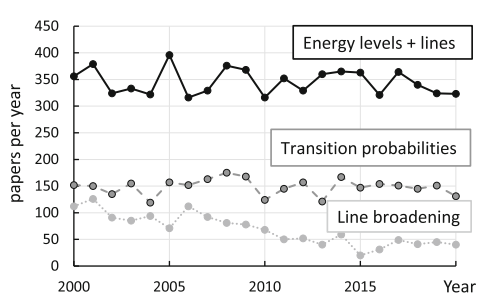EPJ D Highlight – Estimating uncertainty in atomic spectroscopy
- Details
- Published on 17 April 2024

A numerical toolbox offers a robust way to evaluate uncertainty in atomic wavelength measurements.
If you repeat a measurement with the same or different instruments, you’ll get slightly different numbers each time. Estimating the uncertainties associated with these numbers turns them into an informative result. In a study published in EPJ D, Alexander Kramida, of the National Institute of Standards and Technology in Maryland, USA, now explains a new statistical approach for estimating the uncertainty associated with atomic spectroscopy measurements. He discusses how this approach can be applied both to measurements of spectral line wavelengths, and to other atomic properties that are indirectly determined from them.
Wavelength measurements of atomic spectral lines are intrinsically heterogeneous, even when using the same equipment and methods. Statistical recipes have long existed to describe the associated uncertainties. But no statistical approach fits all scenarios, and statistical theory developments in the last decade have led to more robust tools.
The new statistical approach that Kramida advocates is based on a concept known as dark uncertainties. It correctly singles out erroneous measurements as the culprit of disagreement between multiple results. The approach has been refined to allow for easy detection of abnormally deviating wavelengths, rather than suggesting which measurements should be reanalysed or removed. It can be used not only in direct comparisons of several measurements of the same spectral line, but also in comparisons between observed wavelengths and ones derived from transitions.
Kramida has developed a numerical toolbox that implements this statistical approach. He also describes methods to evaluate the accuracy of theoretical calculations of atomic properties which, he says, often differ by orders of magnitude. Comparing results obtained with different computational approaches can provide means for a robust estimation of uncertainties.
The new tools should encourage researchers to make and include uncertainty estimates in their publications.
Kramida, A. Evaluation of uncertainties in atomic data on spectral lines and transition probabilities. Eur. Phys. J. D 78, 36 (2024). https://doi.org/10.1140/epjd/s10053-024-00820-y





